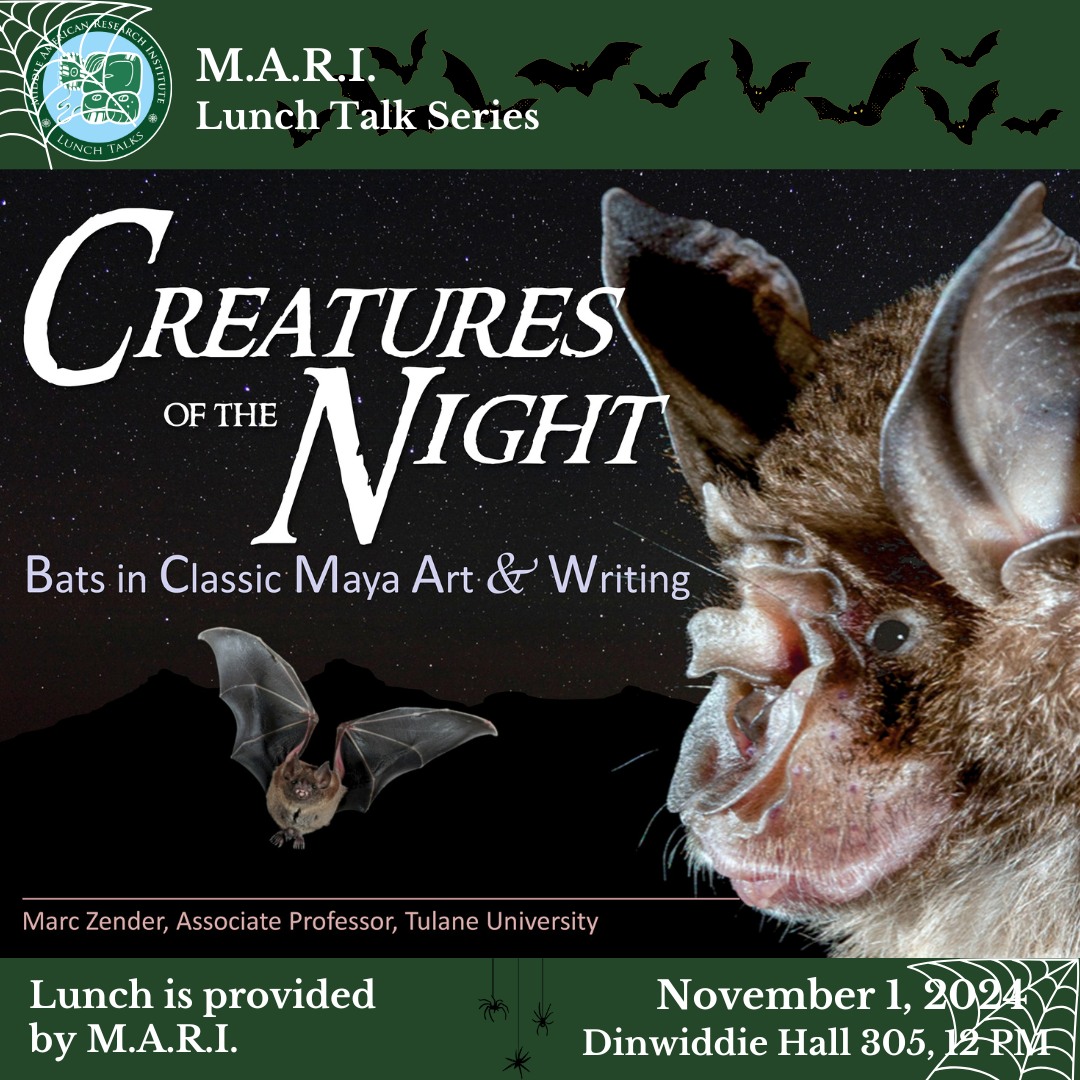
For the Classic Maya, night was an alien landscape, antithetical and inimical to humans, the domain of predatory, rapacious animals such as jaguars, bats, and mosquitos. As I’ve shown previously (Zender 2010, 2012), such creatures are classified in Maya writing and art as “nocturnal” through the visual infixation of an element reading AHK’AB ‘darkness’. Some of these beings are actually nightmarish, such as the shrieking bats often shown holding plates of dismembered human body parts, their wings marked with disembodied eyes, crossed bones, and mandibles. Undoubtedly this reflects the association of these creatures with disease, ill omen, and death. Yet there seems to be more to the story, for bats (Chiroptera) are well-represented in this part of the world, with seven distinct families and 86 species in Guatemala alone. These vary from the diminutive, frugivorous, and leaf-nosed Honduran white bat (Ectophylla alba) to the large, insectivorous, snub-nosed big brown bat (Eptesicus fuscua) to the medium-sized leaf-nosed vampire bat (Desmodus rotundus). Such striking biodiversity would seem to belie the utility of the singular Mayan term suutz’ “bat”, although closer examination reveals that the Maya modified this core term with various additional adjectives—e.g., chak suutz’ “red/brown bat” or, perhaps, “great bat”, k’an suutz’ ‘yellow bat’, and sak suutz’ “white bat”—thereby capturing at least some of their variations. Similarly, while Thompson recognized only one glyph for “bat” (T756) in his Catalog of Maya Hieroglyphs (1962), we now know of at least eight distinct “bat” signs in Maya writing, including the logograms SUUTZ’ “bat (generic)” and TZUTZ “furry” (typically used in rebus for the verb tzutz ‘complete’), the syllabograms xu (derived from xux- ‘whistle’) and tz’i (derived from tz’i- ‘shriek’), as well as at least four others of unknown value and motivation. Close study of these hieroglyphs and their variations, coupled with the numerous contexts of chiropterans in art, reveals much of interest with respect to surprisingly nuanced Maya views about bats and the development of those views over several hundred years of Maya writing and art.
Marc Zender received his PhD from the Department of Anthropology & Archaeology of the University of Calgary in 2004. He has since held academic positions at Harvard University (2005-2011), and is now an Associate Professor of Anthropology at Tulane, where he has taught linguistics, epigraphy, and Mesoamerican languages since 2011. Dr. Zender’s research interests include anthropological and historical linguistics, comparative writing systems, and archaeological decipherment, with a regional focus on Mesoamerica (particularly Mayan and Nahuatl/Aztec). He is the author of several books and dozens of articles exploring these subjects. In addition to his research and writing, Marc is the editor of The PARI Journal, and (with Joel Skidmore) operates Mesoweb, a major internet resource for the study of Mesoamerican cultures.
M.A.R.I. Lunch Talks invite guest speakers to host seminars at M.A.R.I. on a wide variety of topics related to the archaeology, history, and ethnography of Mesoamerica and other world areas. The events typically take place on Fridays around noon and can be delivered in English and Spanish.
